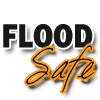FloodSafe
FEMA Urges People to Know Codes Before RebuildingTuesday January 11, 2022 06:56 am |
 |
Terrebonne Parish
Department of Planning and Zoning
Recovery Assistance and Mitigation Planning
FloodSafe Minute
|
FEMA Urges People to Know Codes Before Rebuilding Adapted from Original Post Friday October 24, 2008 for FloodSafe Minute 1/11/2022 |
Summary
The Federal Emergency Management Agency (FEMA) advises Louisiana residents who must repair damaged homes or businesses to be aware of the special requirements for buildings that have been substantially damaged or will be substantially improved.
Individual property owners need to work closely with their local community officials to ensure compliance with floodplain requirements to maintain access to federally backed flood insurance policies for residents and business owners parishwide. Noncompliant activities will require the Parish to enforce the Flood Damage Prevention Ordinance, including requiring a structure to be elevated, relocated or demolished. For more information, call 985-873-6567. The Parish offices are temporarily relocated, so phone communication is preferred.
Background
Both substantially damaged and substantially improved structures must be brought into compliance with National Flood Insurance Program (NFIP) regulations.
The NFIP, a Federal program enabling property owners to purchase flood insurance, is based on an agreement between local communities and the Federal government. Under this agreement, new construction and substantially improved or substantially damaged structures located in a flood hazard area will be mitigated ( for example: elevated, relocated or demolished) to reduce future flood risks. In return, the Federal government will continue to make flood insurance available within the community as a financial protection against flood losses. As a result of this agreement, if a home or business is located in the 100-year floodplain (a special flood hazard area where there is a 1 percent chance of flooding in any given year), the community’s floodplain management staff may be required to ensure homeowners an business owners are aware of the requirements associated with repairs and reconstruction activities, which is based on the level of damages or improvements over the last 10 years.
Frequently Asked Questions and Answers
Q. What happens if a substantially damaged or substantially improved structure is not built in compliance with community floodplain management regulations? ·
A. If a structure is substantially damaged or substantially improved and is not in compliance with the community’s floodplain management regulations, insurance rates and premiums will be significantly higher for that structure and the local government will be required to enforce the Flood Damage Prevention Ordinance in order to continue to make flood insurance available.
For substantially damaged structures that have their lowest floors several feet or more below the base flood elevation, the annual premium could increase to thousands of dollars. Structures that are not built in compliance jeopardize the community by putting them in violation of their flood damage prevention ordinance, which could result in the community being put on probation or suspended from the NFIP.
Q. What is a substantially damaged building?
A. A substantially damaged building is a structure that has been so badly damaged that to repair it will require an expenditure of 50 percent or more of the building’s pre-damaged market value. For example, if the market value of a home is $100,000 but it sustains damage and the damage will cost $50,000 or more to repair, that home is considered substantially damaged.
Q. What is a substantially improved building?
A. A substantially improved building is one that will be reconstructed, rehabilitated, will receive an addition, or otherwise be improved and the improvement cost equals or exceeds 50 percent of the market value of the structure before the start of construction. This term includes structures which have incurred substantial damage. Sometimes a building sustains less than 50 percent damage; however, the owner decides not only to repair the building, but also to improve it. The result can be a substantially improved building. For example, if repairing the building costs 30 percent of the structure’s market value and adding another room costs 20 percent or more of the structure’s market value, then taken together, the repairs and improvement equal 50 percent of the structure’s market value so that the owner now has a substantially improved building.
Q. Who determines whether a structure has been substantially damaged?
A. Ultimately, it is the responsibility of the community permit official to ensure that market value estimates are reasonably accurate and that the cost estimate reasonably reflects the actual costs to fully repair the damage and make any other improvements to the structure. However, the local permit official may require the permit applicant or owner of the building to supply the necessary information, such as appraisals, construction cost estimates, etc.
Q. How much accuracy is needed in determining whether a structure is substantially damaged?
A. The closer the improvement or damage appears to approach 50 percent of the market value of the structure, the greater the precision needed in determining if it is substantial. For example, if the damage suffered appears to be minor (40 percent or less) compared to the market value of the structure, more approximate methods for determining substantial improvement may be acceptable. The same is true if the damage suffered is extensive (60 percent or more). However, if the damage suffered or improvement to be made is suspected to be between 40 percent and 60 percent of the structure’s market value, then detailed, itemized estimates for the cost of repair and definitive estimates of market value should be used.
Reference
Chapter 9: Flood Damage Prevention, Section 9-2(b). Any person violating any provision of this chapter shall be so notified by certified return receipt mail of the specific violation and given no less than five (5) days and no more than thirty (30) days to either remove the unlawful structure, if it is prohibited, or cause it to conform to the provisions of this chapter, if it is an authorized structure or repair-related activity.